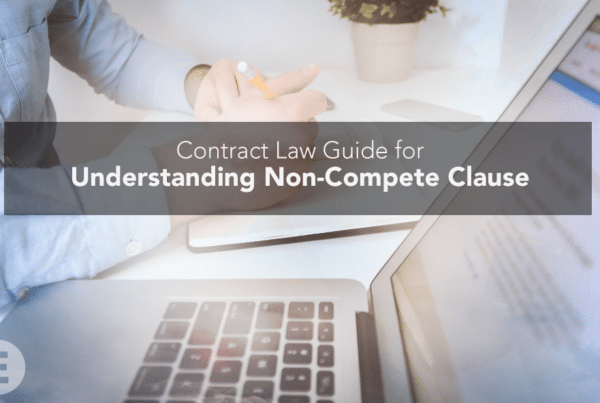Larceny is a basic property offence that exists in common law and under Section 117 of the Crimes Act 1900 (NSW):
“Whosoever commits larceny, or any indictable offence by this Act made punishable like larceny, shall, except in the cases hereinafter otherwise provided for, be liable to imprisonment for five years.”
Larceny has been interpreted by the High Court of Australia to involve an act of fraudulently, and without a claim of right, positively taking and carrying away anything capable of being stolen with the intention of permanently depriving the owner of his/her property.
ELEMENTS OF LARCENY EXPLAINED BY CRIMINAL LAWYERS IN SYDNEY
The Prosecution must prove the following elements beyond a reasonable doubt:
That you:
- Took and carried away;
- Property capable of being stolen;
- Which belonged to another; and
- Without the consent of the owner.
At the time of taking, you acted:
- With the intention of permanently depriving the owner;
- Without a claim of right; and
- Fraudulently.
Took and Carried Away
The Crown must establish that you physically took and carried away the property (known as “asportation”). The Court has held that the slightest voluntary movement by the Defendant is enough to satisfy the asportation requirement.
Property Capable of Being Stolen
In accordance with Section 4 of the Crimes Act 1900 (NSW), “property” is defined as “every description of real and personal property; money, valuable securities, debts and legacies; and all deed and instruments relating to, or evidencing the title or right to any property, or giving a right to recover or receive any money or goods…”
The Prosecution must prove a series of requirements concerning the property stolen:
-
The property MUST be of some value; even the slightest value is enough—for example, a piece of paper is property of sufficient value.
-
The property MUST be moveable. This has been interpreted to include: gas, electricity, documents of title to land and valuable securities, such as bills of exchange. Information and land have not been construed as property capable of being stolen.
-
The property MUST have an owner. Taking possession of abandoned property is an exception, as the owner intentionally gave up his/her interest in the property.
Which Belonged To Another
To establish that the property belonged to another, the Prosecution must prove possession, control and ownership.
Possession
Possession involves either actual or constructive possession.
Actual possession is where you have physical custody of the property or have it in such a place that you alone have the right or power to place your hands on it and take custody of it.
The owner (whether an individual or corporation) in possession does not have to have any knowledge of the property. For example, you can be held liable if you take golf balls from a golf club. Moreover, an individual who unlawfully acquires property may be in possession of it.
Constructive possession is where the owner has the legal right to assume possession whenever he/she wishes to do so. For example, property that is in physical control of an employee is at law, still in the possession of the employer.
Control
An individual is in control when he/she has an exclusive right of manual custody over property.
Ownership
Property is capable of being stolen from a person who owns it but is not in possession or control of it. For example, taking a camera that you found in front of someone’s house and not making any enquiries to locate the owner will amount to larceny.
Intention To Deprive Permanently
To be convicted of larceny, the Crown must prove that at the time of taking the property, you intended to permanently deprive the owner of it. This issue becomes complex when you take goods but claim that you have an intention to return it to the owner, subject to specific conditions. Section 118 of the Crimes Act 1900 (NSW) is significant as it indicates that an intention to return property is not a defence to larceny if you exercised ownership of the property for your own/someone else’s use or benefit. For example, pawning property with the intention of repurchasing it would satisfy this provision.
Claim of Right
If you have a claim of right in good faith, the larceny charges will be dismissed against you. You must establish that you genuinely and honestly thought that you had a legal right and entitlement to the property.
Fraudulently
Where you carry and take away property with the intention of permanently depriving the owner, and without a bona fide claim of right, it is likely that the Court will find that you have acted fraudulently.
PENALTIES EXPLAINED BY CRIMINAL LAWYERS IN SYDNEY
A larceny charge is a Table 1 offence and will likely be heard in the Local Court. The Department of Public Prosecutions or the Defendant can elect to have the matter heard in the District Court before a Judge and Jury.
The penalties for a successfully proven larceny charge include:
-
If the value of the property stolen exceeds $5,000.00, a fine of $11,000.00 or 2 years imprisonment will be imposed.
-
If the value of the property stolen DOES NOT exceed $5,000.00, a fine of $5,000.00 and/or a term of imprisonment of 2 years will be imposed.
-
If the value of the property stolen is under $2,000.00, a fine of $2,200.00 and/or a period of imprisonment of 2 years will be imposed.
-
Suspended Sentence: A suspended sentence under Section 12 of the Crimes (Sentencing Procedure) Act 1999 (NSW) (CSPA) involves the imposition of a custodial sentence (being not more than 2 years) on the condition that you are subject to a good behaviour bond.
-
Community Service: The Court may make a community service order under Section 8(1) of the CSPA directing you to perform community service for a specified number of hours (maximum of 500 hours). For a magistrate to determine whether you are a suitable person for a community service order, a report must be prepared by the probation and parole service.
-
Good Behaviour Bond: A good behaviour bond under section 9(1) of the CSPA enables the Court to make an order directing you to enter into a good behaviour bond for a period of up to 5 years. The magistrate may impose a number of conditions that he/she thinks are appropriate and reasonable to your case (must be strictly complied with).
-
Dismissal of charges and conditional discharge—also known as a ‘Section 10’.
If you have been charged with larceny or have any questions, please do not hesitate to contact the best criminal lawyers in Sydney on 1800 395 342.









